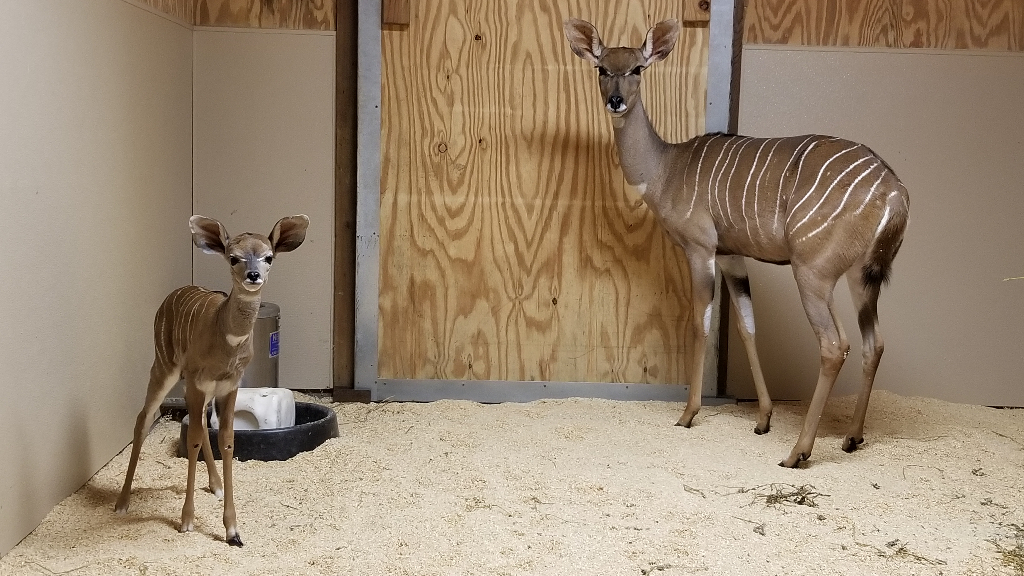The Smithsonian’s National Zoo announced on Thursday that they are celebrating the birth of a male lesser kudu calf at its Cheetah Conservation Station.
The male lesser kudu calf was born on March 28 and found to be healthy and strong, according to the Zoo’s veterinarians who examined him the next day.
He is the third calf born to his seven-year-old mother Rogue and 10-year-old father Garrett. He has two brothers, both two-year-olds, named Kushukuru and Toba.
Rogue was transferred to the National Zoo from the St. Louis Zoo in Missouri in October 2016 to breed with Garrett, after it was recommended by scientists at the Association of Zoos and Aquariums’ Species Survival Plan (SSP).
The lesser kudu, which is native to the arid and semi-arid areas of northeastern Africa, including parts of Ethiopia, Somalia, Kenya, Sudan, Uganda and Tanzania, has been listed among near-threatened species by the International Union for Conservation of Nature.
❤️🦌 Welcome, kudu! Cheetah Conservation Station keepers are celebrating the arrival of a lesser kudu calf who was born Mar. 28 to parents Garrett and Rogue. Big brothers Kushukuru and Toba are very interested in him. Lucky visitors may spot the calf when the Zoo reopens May 21! pic.twitter.com/LC79X9uIMe
— National Zoo (@NationalZoo) April 29, 2021
It is estimated that there are approximately 100,000 lesser kudu in the wild, but the population is decreasing because of hunting, human and livestock expansion, and disease.
The calf currently doesn’t have a name and keepers at the Zoo are looking for one.
Visitors may be able to view him along with his family members when the National Zoo reopens to the public May 21.
Free timed-entry passes or paid parking passes that are required to enter the Zoo may be reserved starting May 14. For further details about visiting the facility, click here.

